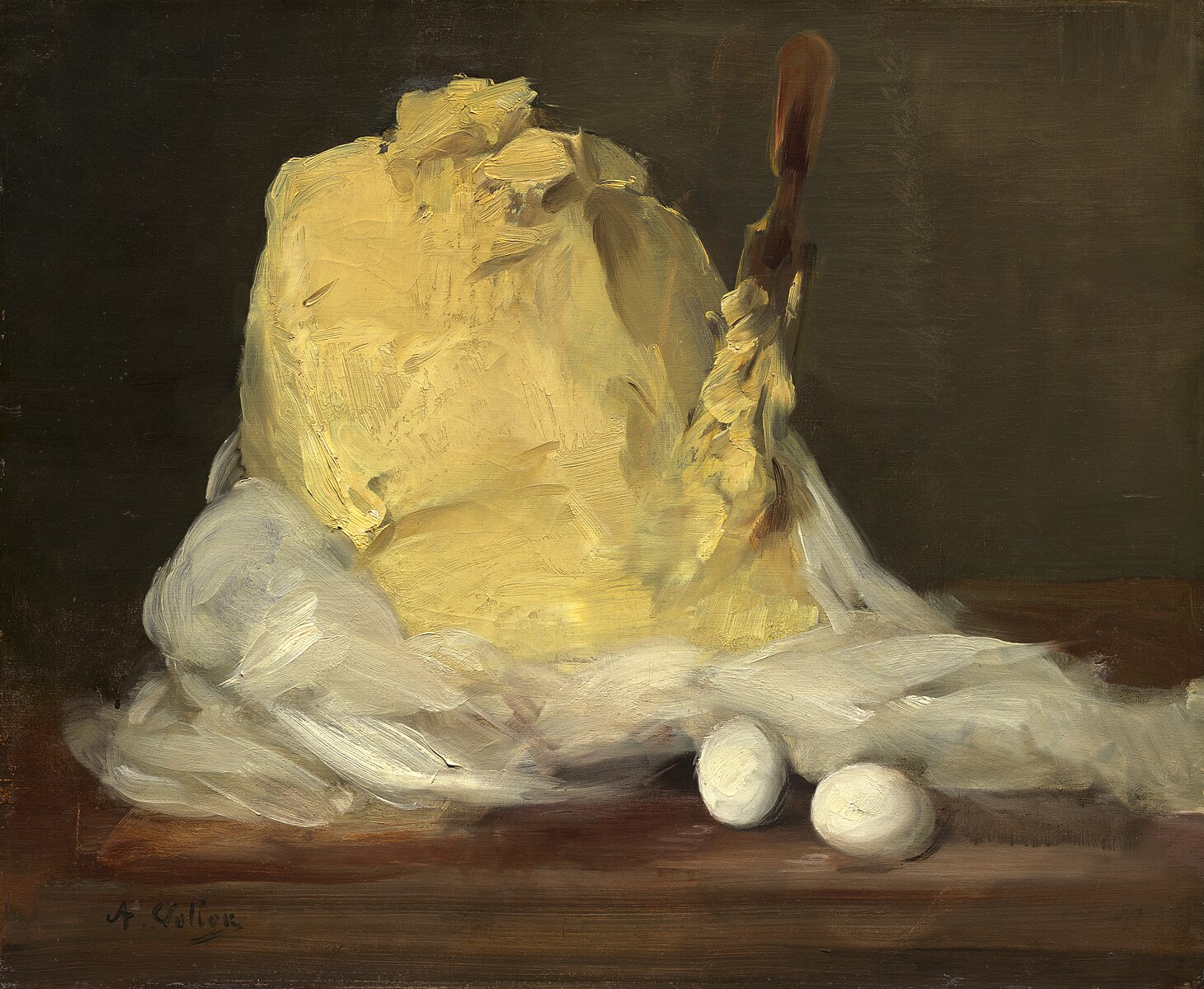 Image courtesy of Wikimedia Commons, “Mound of Butter,” (1875) Antoine Vollon, National Gallery of Art, Washington D.C.
Image courtesy of Wikimedia Commons, “Mound of Butter,” (1875) Antoine Vollon, National Gallery of Art, Washington D.C.
If wine can taste of its soil, why not butter? In France, butter isn’t just a spread — it’s a matter of pride, regional identity, and centuries-old tradition. From the salted butters of Brittany to the sweet cream butters of Charentes, the French take butter as seriously as they take wine and cheese. And yes, terroir — the combination of soil, climate, and farming practices — makes a difference.
Normandy: The Butter Benchmark
Normandy is arguably the butter capital of France. Its lush, rain-fed pastures produce rich milk with a high butterfat content. Beurre d’Isigny, with its AOP (Appellation d’Origine Protégée) status, is the gold standard. Known for its deep yellow color and slightly nutty flavor, Isigny butter owes its richness to cows grazing on mineral-rich coastal grasses.
Key Features of Normandy Butter:
-
High butterfat (82%+) for a creamy texture
-
AOP protection guaranteeing origin and traditional production methods
-
Slight natural salinity, a hint of the nearby sea
Pairing Tip: Normandy butter shines when simply spread on a warm baguette, or melted over steamed vegetables where its nutty depth can take center stage.
Charentes-Poitou: Sweet Cream Elegance
Further south, the Charentes-Poitou region is home to another famous AOP butter: Beurre Charentes-Poitou. This butter is made using a lactic fermentation process, giving it a tangy complexity. It’s particularly prized by pastry chefs, as its subtle acidity enhances laminated doughs like croissants and puff pastry.
What Makes Charentes-Poitou Butter Special:
-
Cultured flavor from lactic starters
-
Consistent texture, perfect for baking
-
Milder color, reflecting the region’s slightly different grazing conditions
Pairing Tip: Use Charentes-Poitou butter for baking — its cultured tang brings depth to brioche, kouign-amann, and classic croissants. For a treat, try it melted on fresh shellfish for a delicate, balanced finish.
Brittany: The Land of Salted Butter
Brittany is synonymous with beurre salé — salted butter. The tradition goes back to when the region was exempt from the historic salt tax (gabelle), allowing Breton butter to be generously salted. Today, crystal-studded demi-sel butters remain a beloved staple, especially paired with buckwheat crêpes or spread thick on a warm baguette.
Pairing Tip: Breton salted butter is ideal for salted caramel desserts, topping pancakes, or pairing with radishes and sea salt as a rustic appetizer.
Terroir on the Tongue
Just as in winemaking, the concept of terroir applies:
-
Soil and grass quality affect milk flavor
-
Climate determines grazing seasons and grass composition
-
Local bacteria cultures used in fermentation lend unique aromas
Why It Matters to the French
Butter is not just an ingredient — it’s cultural heritage. AOP protections ensure that traditional methods survive and that consumers can taste a true sense of place in each pat.
Meet the Makers
Artisanal producers like Maison Bordier in Brittany or La Ferme de la Vieille Abbaye in Normandy are elevating butter into a craft product. Some churn small batches by hand, offering flavored varieties like seaweed, smoked salt, or yuzu for adventurous palates.
How to Taste Like a Local
Just as in winemaking, the concept of terroir applies:
-
Try unsalted and salted versions side by side
-
Spread on good bread to taste the differences without distraction
-
Look for AOP labels at markets to experience authentic regional varieties
-
Visit farmers’ markets or dairies to buy directly from producers
By tasting across regions and experimenting with pairings, you’ll quickly discover why the French are so fiercely proud of their butter — and why it deserves a place alongside wine and cheese as one of the country’s great gastronomic treasures.